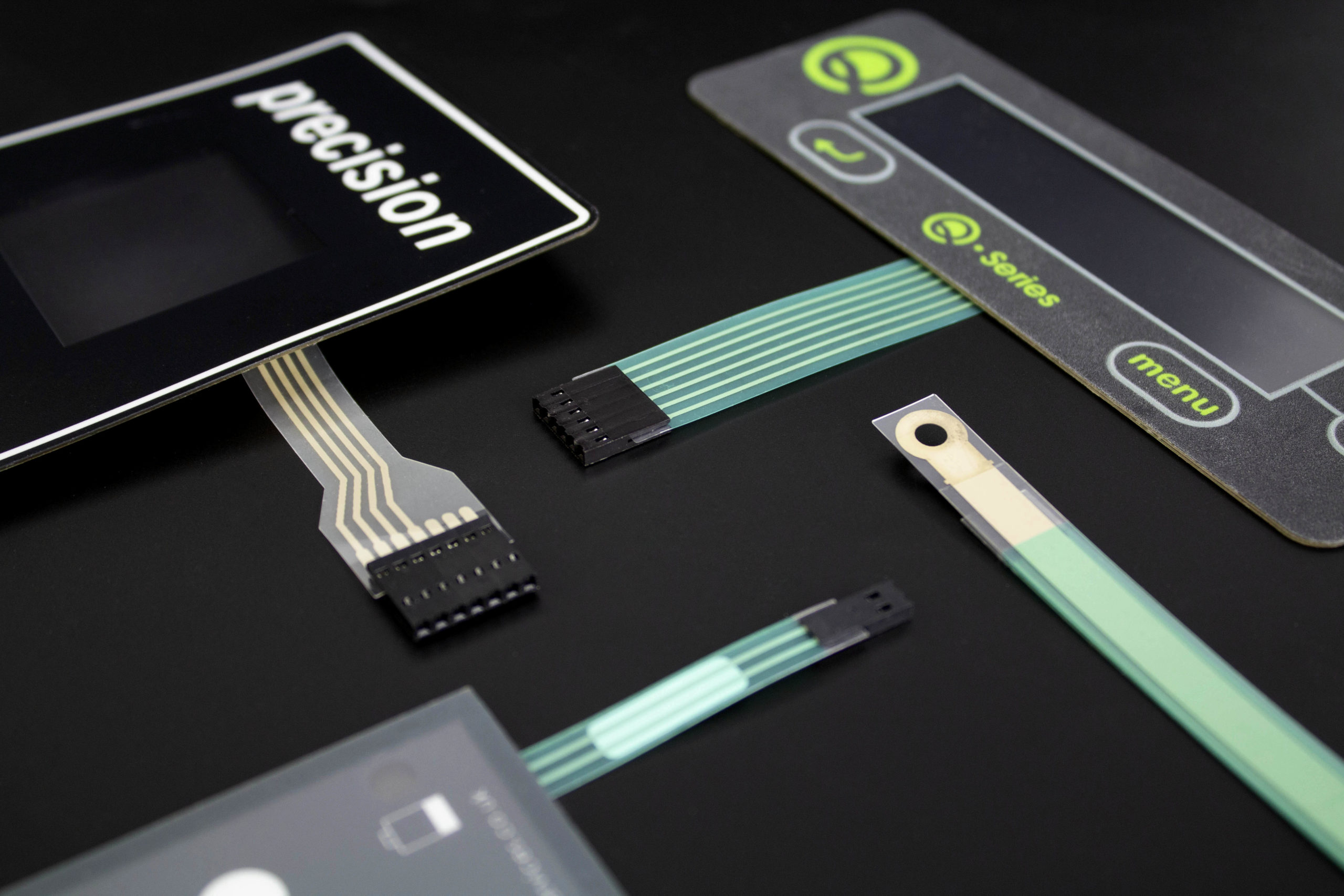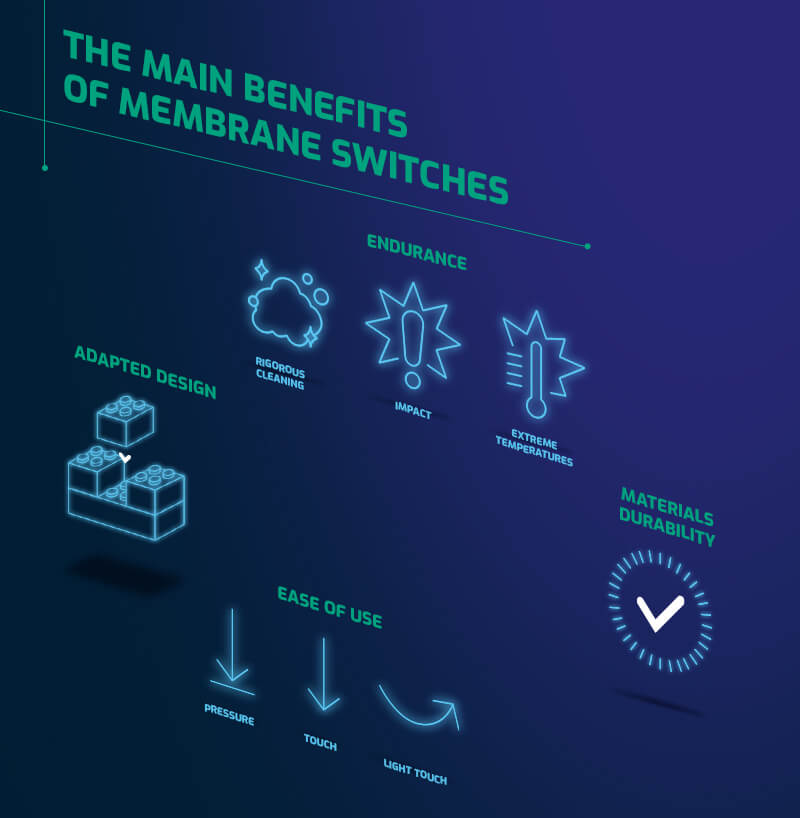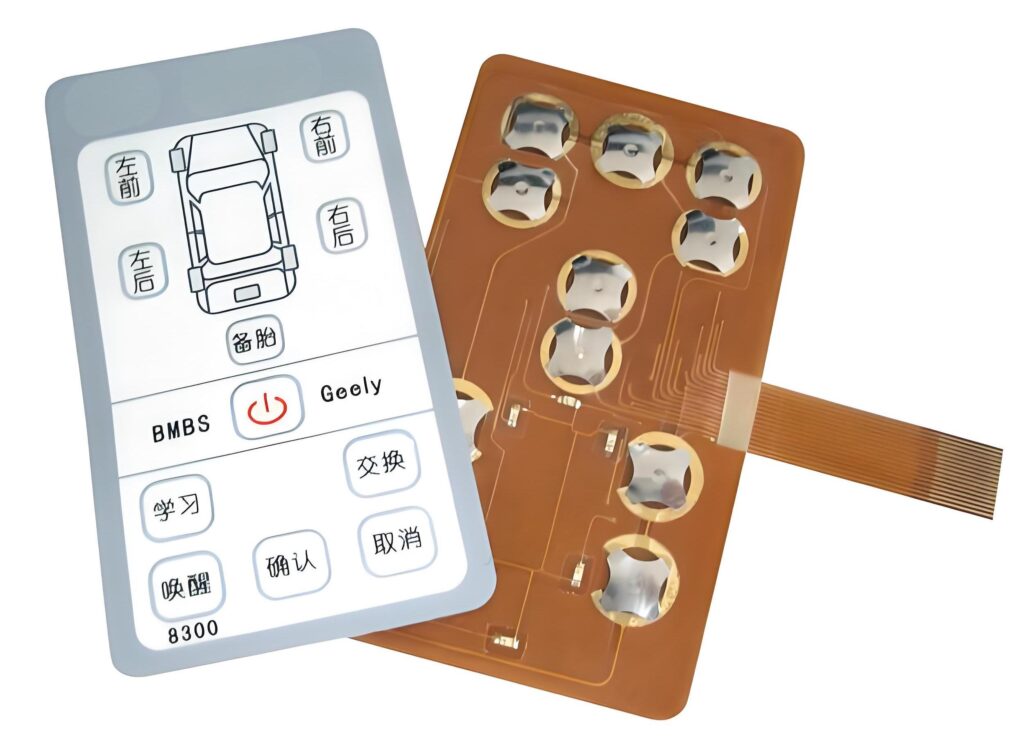The Production Process Behind Membrane Change: What You Need to Know
The manufacturing procedure behind membrane changes combines careful layout, material option, and quality assurance. It begins with understanding the ins and outs of membrane layer button design and proceeds through different stages, including product choices and printing strategies. Each phase plays a vital duty in guaranteeing capability and sturdiness. The complexities of layer construction and the extensive screening standards may expose understandings that are not instantly evident. What exists beyond these fundamental aspects?
Understanding Membrane Change Design
Although membrane layer switches may appear basic at first glance, their design includes detailed factors to consider that ensure performance and durability. The layout procedure begins with an extensive understanding of individual demands, including the interface's designated application and environmental elements. Functional designs is a crucial element, as the format needs to assist in simplicity of use while guaranteeing that tactile comments satisfies user expectations.Moreover, the layering of components, such as visuals overlays, glue layers, and conductive traces, have to be specifically engineered. membrane switch. This layered configuration not only affects the button's responsiveness however also impacts its long life. Interest is provided to the securing strategies utilized to protect versus dampness and dust, which could endanger efficiency. Furthermore, design considerations expand to appearances, where color design and aesthetic clarity enhance user experience. Ultimately, the design of membrane layer changes balances capability, user experience, and durability, making certain that they fulfill the needs of numerous applications efficiently
Materials Utilized in Membrane Change Production
When picking materials for membrane button production, it is vital to consider both efficiency and longevity. The primary products consist of polyester and polycarbonate movies, which give flexibility and toughness. These films are usually coated with glue to guarantee correct bonding to substrates. Conductive inks, typically made up of silver or carbon, are crucial for developing electrical connections within the button, enabling trusted operation.Additionally, a protective layer, such as a tough coat, is often used to enhance scrape resistance and long life. The choice of backing material, such as acrylic or foam, can substantially impact the button's responsive feel and overall individual experience. Numerous environmental factors, consisting of temperature and humidity, should assist product choice to assure peak efficiency in specific applications. Ultimately, the best combination of products adds to the membrane switch's functionality and life expectancy, making notified options crucial for manufacturers.
The Printing Refine: Creating Video and Text
The printing procedure in membrane switch production plays a significant function in generating top notch graphics and text. Various graphic layout strategies are used to ensure aesthetic allure and functionality, while mindful ink option approaches are crucial for durability and performance. Understanding these elements is fundamental for attaining ideal cause membrane switch design.
Graphic Design Techniques
Graphic layout methods play a vital role in the printing procedure of membrane switches, as they specify exactly how graphics and text will inevitably show up on the end product. Effective visuals style involves the critical use shades, layouts, and typefaces to improve readability and visual allure. Designers often use vector graphics for scalability, guaranteeing that photos remain sharp at different sizes. Furthermore, interest to comparison and placement is important, as it affects user communication and visual quality. The unification of branding elements, such as logo designs, must be handled with treatment to keep brand name integrity. On the whole, thoughtful graphic style methods add significantly to the performance and attractiveness of membrane switches, affecting customer experience and item efficiency.
Ink Option Techniques
Selecting the appropriate ink is vital for achieving the preferred aesthetic high quality and longevity in membrane switch production. Different ink types are used, consisting of solvent-based, water-based, and UV-curable inks. Each kind offers distinct qualities, such as resistance, bond, and adaptability to ecological variables. Solvent-based inks are usually preferred for their durability and vibrant colors, while water-based inks are a lot more eco-friendly however may have restrictions in adhesion. UV-curable inks supply rapid curing and durable performance. Furthermore, color matching techniques assure that the chosen inks line up with design specifications. Ultimately, the selection of ink have to take into consideration variables such as application technique, substrate compatibility, and end-use demands to accomplish remarkable lead to membrane button graphics and message.
Layer Construction and Setting Up

Material Choice Refine
A mindful selection of materials is vital in the production procedure of membrane layer buttons, as it straight affects functionality and sturdiness. The main products utilized consist of polyester, polycarbonate, and different conductive inks. Polyester is usually preferred for its superb resistance to chemicals and abrasion, making it ideal for rough environments. Polycarbonate, on the other hand, offers exceptional clearness and impact resistance, which is useful for applications needing visibility and robustness. Conductive inks, generally composed of silver or carbon, are important for producing dependable electrical pathways. In link addition, the selection of sticky materials impacts the total honesty of the button - membrane switch. Examining aspects such as environmental exposure, responsive comments, and aesthetic needs overviews producers in selecting the finest materials for their specific applications
Layer Attachment Methods
Adhering layers in membrane layer switch construction is an essential procedure that guarantees capability and long life. Different adhesion methods are employed to safeguard suitable bonding between layers, which typically consist of making use of adhesives, warmth, and pressure. Pressure-sensitive adhesives (PSAs) are commonly made use of for their ease of application and prompt bonding abilities. In addition, thermal bonding methods can be used, where warm is used to trigger adhesive properties, safeguarding a strong bond. The choice of attachment technique greatly depends upon the products included and the specific application demands of anchor the membrane layer switch. Correct alignment and uniform application of adhesives are important to stop issues, protecting the button operates successfully throughout its intended life expectancy.
Top Quality Control Measures
Ensuring quality assurance during the layer building and setting up of membrane layer switches is necessary for maintaining performance and dependability. This procedure typically involves a number of essential measures, including extensive evaluations at each phase of manufacturing. Suppliers utilize innovative testing approaches, such as peel tests and attachment assessments, to verify the stability of layer bonds. Additionally, visual assessments are carried out to identify any type of flaws in printing or product incongruities. Ecological problems, such as temperature level and moisture, are meticulously monitored to guarantee optimal healing and attachment. Routine calibration of devices assists keep accurate manufacturing standards. By executing these high quality control measures, suppliers can substantially reduce the risk of item failing, ensuring that the last membrane switches fulfill the needed specs and customer assumptions.
Examining and Quality Assurance Steps

Innovations in Membrane Layer Change Innovation
As improvements in technology proceed to progress, membrane buttons are gaining from innovative growths that improve their functionality and customer experience. One noteworthy technology is the combination of capacitive touch technology, which permits for more receptive and user-friendly interface. This change not only enhances aesthetic appeals yet also lowers mechanical wear and tear, expanding the lifespan of the switches.Additionally, innovations in graphic overlay products have caused improved toughness and resistance to environmental aspects such as wetness and UV light. These products now use enhanced clearness and illumination, further raising the aesthetic appeal.Furthermore, the incorporation of wise modern technology is transforming membrane switches right into interactive control board, enabling connectivity with IoT tools. This connection fosters a seamless customer experience, leading the way for applications in different sectors, from health care to customer electronics. Collectively, these advancements placement membrane layer switches as vital elements in modern-day device design.
Often Asked Concerns
The length of time Does the Membrane Layer Switch Over Production Process Take?
The duration of the membrane switch manufacturing process can vary significantly. Aspects such as intricacy, materials used, and production volume influence timelines, with common production ranging from a few days to several weeks for completion.
What Are the Common Applications for Membrane Switches?
Membrane layer buttons are generally made use of in numerous sectors, consisting of vehicle controls, family home appliances, clinical gadgets, and consumer electronics (membrane switch). Their flexibility and toughness make them optimal for applications requiring easy to use interfaces and reputable performance in varied atmospheres
Can Membrane Layer Switches Over Be Customized for Certain Needs?

What Is the Life-span of a Typical Membrane Change?
The life expectancy of a regular membrane layer button varies, but typically, it ranges from 1 to 5 million cycles. Elements such as use, environment, and material quality substantially influence toughness check here and total efficiency with time.

Are Membrane Switches Over Ecologically Pleasant?
The ecological friendliness of membrane layer switches differs. Some materials made use of may not be recyclable, while others can be green. The overall influence depends on producing products and practices, requiring cautious factor to consider throughout choice and disposal. The manufacturing procedure behind membrane layer switches combines careful layout, material selection, and top quality control. It begins with recognizing the intricacies of membrane layer switch layout and advances through numerous phases, including product options and printing strategies. When choosing materials for membrane layer switch production, it is important to ponder both efficiency and durability. A mindful choice of materials is necessary in the manufacturing procedure of membrane buttons, as it directly affects functionality and toughness. The choice of bond approach mainly depends on the products included and the details application demands of the membrane layer switch.